What Happened to Oakland’s Downtown?
By Kevin Heffernan
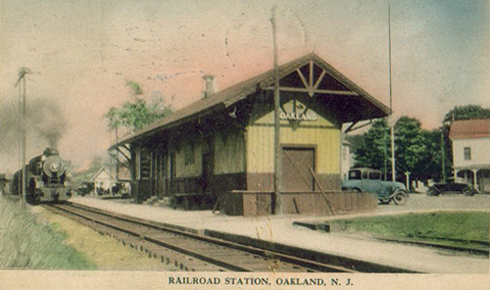
Downtown Oakland…..Well folks, I’m sad to say that this term is a bit of an oxymoron. No, I’m not poking fun at it and I’m not attempting to abuse the priceless memories of those who grew up here. So why is it an oxymoron and what happened to whatever we refer to as downtown Oakland?
In 1872 the wilderness of a farming Oakland had a railroad, a railroad station and large house serving as a ticket agency and as the post office. Then realizing that local citizens needed stuff that the railroad could deliver to them, Mr. Bush built his store in 1877. It ultimately became the beloved Wigwam, the singularly iconic Oakland building of an entire generation. Oakland by 1877 was still a remote outpost of Franklin Township controlled by the pharos of Ridgewood. But, we nonetheless then had the magical and primordial stuff of being a center of commerce (or dare I say town?) unto ourselves. The germ of a town was growing in the wilderness among the farms of the Ramapo Valley. David C. Bush walked and worked the fields of his farm and he had a vision. He also had something secret in his pocket. Let’s just call it pixie dust.
Virtually every town in Bergen County, all 70 of them, were founded and developed around their railroad stations and their railroad stations gave rise and impetus to the development of their downtowns as business districts
But not Oakland.
Oaklanders had a different view of the world and what a main street ought to be. We built beautiful Victorian homes along Ramapo Valley Road near the railroad tracks and station. Yes, it is true that there were some businesses around the railroad tracks and station.
Obviously there was the Bush General Store built in 1877. And there were also the Oakland Hotel, the McNomee Store and the Lloyd store. And who can forget gun powder works with its own rail spur. Even the Calder residence was greatly expanded to become the Calderwood Hotel in the early 1900s. And we can still see the original Van Blarcum home which in time became the Van Blarcum Hotel, Annie Meyers house and ultimately the ‘410’ Professional Building across from where the original Oakland RR station was. These were few and a mere core around the railroad tracks. Up and down Ramapo Valley Road within spitting distance of the tracks, Oaklanders built beautiful Victorian homes, not commercial buildings or stores. No one really knows why our founders chose differently from virtually all other communities. Perhaps it was intentional or maybe it was that they didn’t know better. Regardless, it was their vision for their town to be.
The point is that beautiful homes actually once dominated what we now consider ‘downtown’ Oakland. If there were stores and retail establishments instead of homes surrounding the railroad station, Oakland probably would not have suffered its architectural devastation or at least as much as it has. As Oakland grew, these homes became vulnerable and victims to ‘progress’.
THE WASTELAND OF STRIP MALLS
The Valley of Homes was soon to become the Wasteland of Strip Malls.
It was politics and the lack of vision of biblical proportions that did us in. And, I hasten to add the ‘times’ and apathy of Oakland’s citizens.
Up until 1956, Oakland was truly a Mayberry with not even a traffic light. Our population in 1950 was 1,817 souls and in 1960, it had exploded to 9,446, an increase of over 500%. New residents began to flood into Oakland particularly as Route 208 was beginning to approach our borders. It is said that between 1950 and 1960, over 300 new houses were built per year in Oakland. These new residents demanded the services and resources one might expect from a larger community.
Oakland didn’t have any shopping to speak of as everyone simply went to Pompton Lakes to purchase everything they needed. But while there was no real shopping, Oakland did have a lot of space (aka empty fields and homes) along Ramapo Valley Road in the center of town. These open spaces were the final remnants of Oakland’s agricultural past, ie, abandoned farms. Additionally, the shopping malls along Routes 4 and 17 were opening and causing devastation to local downtown shopping areas throughout the county. This sent a powerful message to the then mayor and politicians of Oakland.
One must add that it was the views and attitudes of the times embraced by the nation and by the citizenry of Oakland that greatly contributed to the destruction of downtown Oakland. The 1950’s was the period of post WW II when America ruled the world. Nuclear energy was on the near horizon and America’s march into progress was the rally cry of the day. Out with the old, in with the new. If one was to consider that the buildings, homes and hotels in downtown Oakland date to about 1895, they were only 65 years old in 1960. Although they were the stuff of architectural heritage, they weren’t antiques. They weren’t modern and they were vulnerable to profit and indifference.
THE BEGINNING OF THE END
An evil brew and confluence of malefactors in Oakland was emerging to initiate the devastation our downtown: An exploding population in a town with no shopping, the pending arrival of Route 208, a downtown composed mostly of ‘old’ wooden buildings and a populist attitude of progress at any price. Oh, and did I mention a mayor and council whose lack of vision was of biblical proportions? When the mayor looked at the retail devastation in the county caused by the shopping malls and mixed that view with the growing needs of his electorate, it was clear to him as to what was needed to be done.
We needed stores. But not clustered along narrow streets. We also needed parking and lots of it for the shoppers. We needed a large variety of different types of stores to attract and keep shoppers. And, all of this had to be centrally located. Our politicians of the mid 1950’s gleefully fondled the map of downtown Oakland looking for space to develop. What they found was the answer to the Oakland politicians’ dream; the newly minted concept of strip malls. And so it was that in the short space of less than 10 years, Oakland went from no shopping to having no fewer than four large strip malls. And in doing so, our downtown was virtually destroyed.
In 1957 Oakland was to have a supermarket with additional stores. These factors combine to equal Oakland’s very first strip mall when we welcomed the Grand Union to town in what was to be later known as the Sears Shopping Center.
Although it’s location initially seems odd, consider that the entire 10 acres on the strip mall was once owned by the Ponds Church in 1924. The then mayor on January 30, 1955 in an incredible show of hubris made a presentation to the Elders of the Ponds Church. His agenda was to have the church building demolished and purchase the land because it was in the way of the soon-to-be new strip mall. He offered an alternative site in town as a swap. The Elders listened as politely as they could and after he left, immediately initiated plans to expand the church to its present size. It was the ecclesiastical equivalent of ‘Don’t let the door hit you in the butt’. Literally, thank God.
But the development of this new strip mall in 1957 consumed the last and only vacant property in the center of Oakland. Future additions to the inventory of retail stores would have to be at the expense of what was already here, ie, our cultural and architectural heritage. Oakland’s first new strip mall was a success. More, newer and bigger were the by-words of the day.
TOO MANY IS NOT ENOUGH
The nearest and obvious prime meat for development was the property of the Oakland Military Academy, an Oakland Victorian architectural icon whose core structure dated back to the late 18th or early 19th Century. The Academy was founded by John Sarcka in the 1930’s after Mrs. Calder passed away. Due to the success of the Academy, it needed additional space for barracks and for classroom training. As a result it began to successfully acquire almost every building adjacent to the Academy property along Ramapo Valley Road and even a few that weren’t.
After purchasing the Calderwood, Sarcka purchased the revered Oakland Inn on the Southeast corner of Ramapo Valley Road and Yawpo Avenue. With only two exceptions he then purchased every Victorian home on the east side of Ramapo Valley Road between Yawpo and Maple Avenue. He then acquired the Sanders property located on the North side of Yawpo Avenue containing two old, 2 story wooden apartment buildings behind the current Bank of America building. The Academy also owned a large house on the West side of Ramapo Valley Road located where the current Oakland Drugs is situated. It was called the Penny House.
Hence the Academy property literally contained everything that a developer and politician could ask for: Massive space, a perfect location, ‘old’, disposable buildings and potential tenants. Permit me to add profits. Lust and greed know no bounds.
What follows a first hand verbal account of the event that led to the demise of the Oakland Military Academy. And it is from a person who got his information directly from John Sarcka: Sarcka’s lips to his ears and his lips to my ears.
It seems that shortly after the development of the first Oakland strip mall behind the Ponds Church, The Oakland Military Academy suddenly began to receive building code violations from the borough for plumbing, safety, fire, electrical, and so forth. Although Sarcka fixed the deficiencies, the repairs never seemed to be satisfactory and further deficiencies were even discovered. The volume of them, the suddenness of their discovery and the frequency of being cited was, let’s just say, very highly unusual particularly since Sarcka had great position and stature in Oakland at the time. The cost of the repairs to the many and growing number of code violations became massive and on-going and the costs were becoming prohibitive. Sarcka is quoted as asking why, “Why are they doing this to me? What do they want and what do they want me to do?” The probable and obvious answer was simply that ‘they’ just may have wanted him to sell out and move his academy someplace else. There was money to be made with the Oakland Military Academy property and Sarcka was in the way.
I ask the reader to reflect upon the fact that the Oakland Military Academy owned virtually all of downtown Oakland on the East side of Ramapo Valley Road. If the Academy is sold, abandoned and destroyed, so would each of every building that it owned. And that’s precisely what happened.
The Oakland Military Academy moved to Orange County, NY. Each building owned by the academy was destroyed, moved or ‘accidentally’ burned down. And Oakland’s downtown was devastated as a result. So much and too much of our architectural history and heritage was sacrificed for a strip mall and a parking lot.
MORE, MORE, MORE
And there were more malls to build, more of paradise to be paved and more parking spaces to create. Yes, there were more sacrificial offerings to the gods of progress.
Immediately adjacent to the brand new Copper Tree Mall were 2 fine Victorian houses coupled with a large expanse of property. They were the Nielsen House and the Kestler House and they impeded the march of progress. And so it was that a new strip mall was built, the A&P came to Oakland and these fine houses on Ramapo Valley Road succumbed in the process. Gone forever.
And then there is one of the unkindest, heritage-destroying cut of all, one inflicted upon Oakland’s architectural heritage by one of our own, Art Seele.
In 1957 Mr. Seele was no longer a young man. For many years he owned the iconic and famous Seele’s Restaurant and Bar, a building whose roots extended back to about 1890 when it was first a private home and then a small hotel. It evolved into a bar and grille and adjacent to it was the locally famous Seele’s Confectionery ice cream parlor, a form predecessor to the Wigwam. It was located on the Northeast corner of Yawpo Avenue and Ramapo Valley Road. The destruction that was taking place in our beloved Oakland apparently gave him the idea that it was OK to join sacrificial orgy occurring in our downtown.
At first, he built his strip mall behind his bar but apparently that didn’t work. So, he demolished his iconic bar and grill in favor of parking spaces and re-opened his bar where Pete and John’s paint store is currently located.
Unfortunately, there’s more and most are Victorian houses sacrificed on the alter of commerce.
First there is the 1795 Becker House. Well, it seems that Oakland politicians eagerly approved the destruction of that house in favor of an Exxon gas station on the corner of Courthouse Place and Ramapo Valley Road. Think about it for a moment….A gas station in exchange for a 18th Century home built during a time when America’s Constitution was still being debated by a nascent nation. Then there was the Victorian home next to the McNomee house. The front of it was sacrificed to Ralph’s Pizza in the 1960’s. But that was not enough as the entire house was destroyed in favor of a bank building and parking lot that now stands in its stead. And then there was/is the Victorian house currently next to Oakland Drugs and recessed back almost behind the current Lukoil gas station. At one time it was curb side on Ramapo Valley Road. But, it seems that the then gas station owners needed to expand and also wanted more parking space. So, the house was literally picked up and moved away from the street to the point that it’s mostly obscured today.
In the 1980’s the ghost of David C. Bush witnessed the destruction of his home on Ramapo Valley Road located immediately across the tracks from his railroad station. Over the years it changed hands several times and served many businesses until finally, it was razed. The property lay fallow until a developer decided that yet another strip mall was needed in Oakland. And so a new Walgreens, Starbucks and yet another bank were built upon the ashes of the farm and homestead of Mr. David C. Bush.
Where there wasn’t destruction, there was the frontal modification of our classic homes on Ramapo Valley Road during the late 1950’s and early 1960’s. Specifically, the ancestral McNomee home, then the Yeoman home and currently the ReMax Real Estate office, had its beautiful front porch torn off to add 2, single story cinder block stores in place of it. But, credit is due as the ‘house’ of the structure was repurposed, enhanced and beautified. Additionally, there was a small, very quaint butcher shop from the turn of the century on RVR that was moved about 50 feet back to make space for a cinder block box retail store now occupied by a hail salon. One must look very hard to discover it as it is currently part of a tire retailer.
NOTHING IS SACRED
The most severe insult to our most beloved downtown Oakland is saved for last.
The year was 1957 and Oakland definitely needed a larger post office. Oakland’s then leading politician looked around to find a suitable location for a new post office and sitting there was the original 1872 Oakland railroad station built by the residents of Oakland on land donated to Oakland.
It fit every criteria for official disposability and destruction: It was ‘old’, rail service was seriously declining, the station was in serious disrepair, it was owned by Oakland and, best yet, it sat on land owned by Oakland as the land was donated to Oakland by David C. Bush. It just doesn’t get any better for the greedy and the apathetic.
And so it was that the original Oakland railroad station of 1872, the edifice that singularly defined Oakland as a geo-political entity, put Oakland on the map and created our downtown area, was doomed to be replaced by a singularly ugly, one story building to serve as both our new post office and as a railroad ticket agency. To add insult to injury, that monstrosity itself lasted only about 25 years before it too was thankfully demolished. Now, the land is vacant and its vacancy stands out in our downtown like a missing front tooth. As a footnote, while our railroad station was literally in the midst of being demolished, a local newspaper reporter asked the then mayor of his thoughts. He responded that “Perhaps this just might be a mistake.” Unbelievable but true!
So, there you have it. In the short space of less than 10 years from 1957, the downtown of Oakland went from the valley of homes to the vast wasteland of strip malls: From a Victorian architectural heritage that could challenge the best in America to a disjointed mix of remnants of the former glory combined with faceless, characterless cinder block retail structures. All in the name of progress.
THE FUTURE IS YOUR CHOICE
The reader now knows what happened to our downtown and why it happened. But while no one can deny that we needed stores for our growing population, no alternative locations were ever considered as there was no sense of historic preservation for future generations. Also the words of downtown ‘charm and character’ were seemingly absent in entirety from the Oakland’s vocabulary and political lexicon of the day. Equally, it’s important to note that downtown Oakland still contains more 19th Century buildings than perhaps any other town in Bergen County in spite of the best efforts of our former politicians.
And in conclusion, I’ll say it again: The destruction of downtown Oakland was initiated and caused by a singular lack of vision of biblical proportions by our elected officials, the silence of our citizens and the greed of developers which combined to sacrifice our architectural heritage upon the altar of ‘progress’. Remaining today is just enough to sadly remind us daily of what used to be and the tragedy that ensued to permit what occurred. Is anybody angry yet?
Yet, questions remain. Specifically, what will become of our remaining treasured downtown buildings built during the 19th Century? Will greed and apathy win again or shall there be a collective will to preserve and enhance our treasures and our downtown? Will future generations of Oaklanders have only faded photos to remind themselves of what was and then to ask why? Will there be a downtown ‘redevelopment’ that obliterates all that remains of our treasures in the name of new progress as currently contained in Oakland’s Master Plan? It’s your call and your choice. Choose wisely while asking yourself if you care enough to care.
kheffernan555@gmail.com

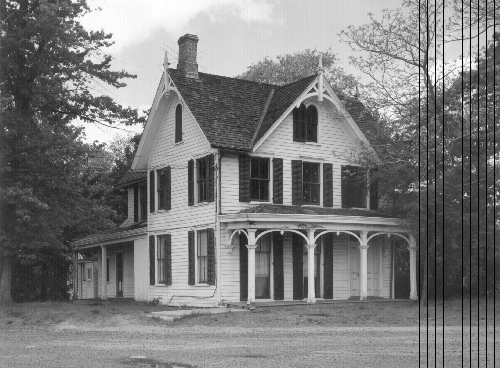
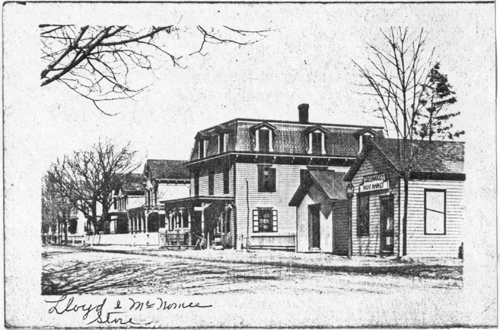
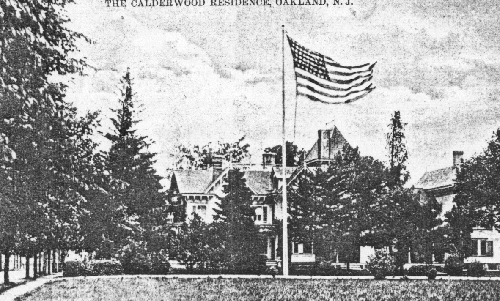
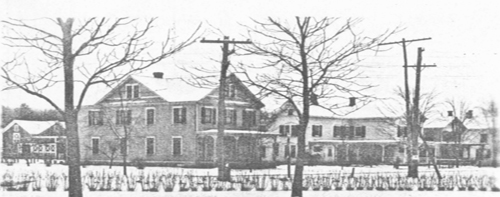
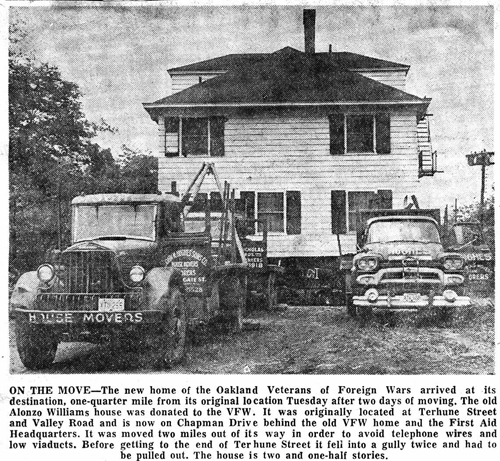
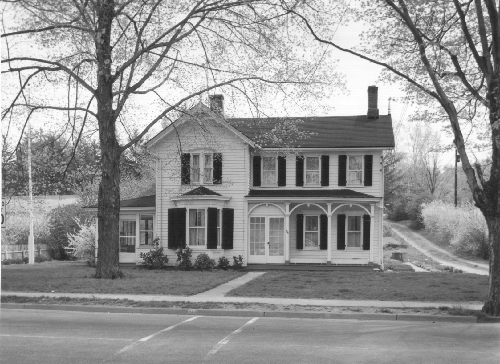
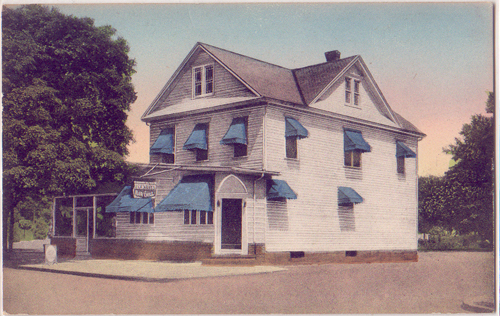
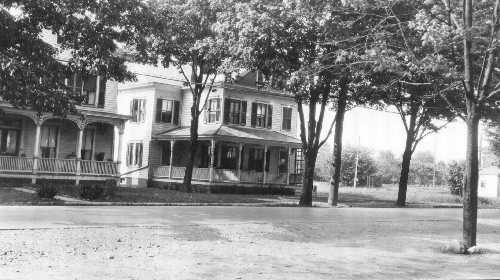
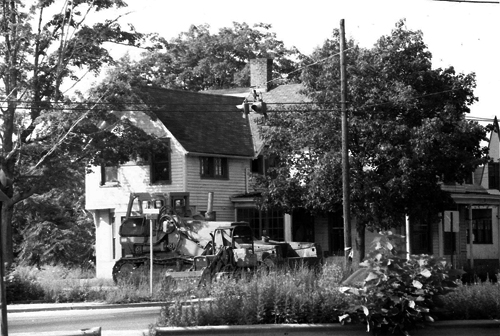
I was born in, and grew up in Oakland. I left at age 21 in 1959 when the beginning of the end was beginning. My grandmother, Mary Vervaet owned the property that was sold to Grand Union to become the first mall (Next to the Ponds Church). My dad had been active in Oakland politics and spoke of a “Master Plan” for future downtown development that called for a street running from the RR station along the tracks to the end of Oak Street. We lived at 8 Oak Street, and this area was one big field with no homes. I do not know why this plan was never followed. Lee Williams
You have written an important and timely history lesson. Who says history lacks a soul? A major failure of the mid century development you describe was not taking into account the geographic limitations of a downtown with only one road access.
The emerging strip malls in Oakland also contributed to the destruction of the Pompton Lakes downtown. One only has to look at the controversy surrounding the Stream House to understand how our demographics drive the political conversation. In that respect nothing has changed.
Kevin,
Thanks for the well-researched bittersweet memories of Oakland’s downtown. I recall bicycling to the Colonial Theatre in Pompton Lakes and enjoying their bustling main street of merchants. When the Wardrobe opened on Ramapo Valley Rd. it was a young man’s delight – two full floors of the latest fashions – and to boot, they allowed high school-aged students the ability to charge their clothing years before plastic purchases were available.
I assembled pizza boxes in the basement of Ralph’s Pizza when it opened; never appreciating the Victorian home it was attached to.
Years later when I published The Observer, I took photographs as the stately trees were felled in front of the former Oakland Military Academy property so that the shopping mall could be built.
Knowing that they would be confronted by daily protesters, Schaus Tree Service started cutting them before sunrise and decimated most of the trees before noon.
Additional pictures were later taken of demonstrators standing in front of a bulldozer vowing to fight further development on the property. But there was no groundswell of support and the community’s love affair with convenience won out.
I’m hopeful that your article will capture the attention of borough officials and residents, and help to ensure the preservation of the remaining heritage of downtown Oakland.
Keep up the good fight.
Craig Lekutis… It’s uncertain to me if the stronger power to preserve what remains of old Oakland is attributed to either some very defiantly and publicly saying ‘no more destruction’ or a few saying ‘yes to preservation’. Passion. Perhaps the difference lies in which group can influence the greater number of votes in the local elections.
Additionally, the idea to rebuild the Oakland RR station is viewed on one hand as a ‘need to’ project for the downtown revitalization in addition to historical charm versus a ‘nice to’ among others who view it as a lower priority. The fact that it can be accomplished without a dime of tax payer money somehow seems to get lost in the discussion. Amazing but true.
If I had to make an assessment and a forced preference between the two groups relative to revitalization of downtown Oakland AND the rebuilding of the Oakland RR station, I think that I’d favor the vocal, pissed off camp of voters who have had just enough and perhaps too much of toothy, empty promises of public officials.
Just say’n.
While many of us are saddened by what happened a half century ago and can learn many lessons on what not to do I think we should stay focused on what we can do now to make our downtown a vibrant and pleasant place for the 21st century. The real area of concern is less than a mile long, most of RVR is still quite nice. We have a thoughtful downtown plan for this area and a couple of historic structures, while endangered, that are in capable hands for renovation.
Let’s hope our governing body exercises the vision necessary to transcend political expediency to get the right job done.
The article was very entertaining, it is a mix of facts, some strong opinions by the writer, and a little bit of fantasy to spice up the piece to make it interesting to read. I thought that accusations about the town leaders of the 1950’s were cheap shots against people that are no longer here to defend themselves, and there was very little factual information to support the claims of impropriety.
The piece correctly points out that the town population grew fivefold during the 1950’s. The mayor and council had tremendous challenges in building a community that would meet the needs of the citizens. I don’t think that the most important item on their agenda was preserving 50 year old homes along Main Street. What happened in Oakland also happened in almost every community in New Jersey and the northeast United States – suburban sprawl. Now Oakland, along with many other New Jersey towns, has developed a downtown improvement plan that will hopefully reverse some of that over time.
The story about the mayor (Alexander Potash) and Ponds Church made me realize that Mr. Heffernan likes to play fast and loose with the facts. Such a meeting did take place in the winter of 1955 and a land swap was discussed. The swap had nothing to do with a strip mall as the writer states, but in fact the town was interested in the site for a new Borough Hall. Ponds was interested in building a new church for the expanding congregation, and the town had a piece of property that would have fit their needs. The church actually formed a committee and studied the proposal carefully. Ultimately, they turned down the offer and decided to build the new church on the current site. Mayor Potash’s family was then, and is still now, very active in Ponds Church. He never would have been disrespected by the church the way Mr. Heffernan describes. In fact, Mr. Potash chaired a fund drive during the depression that raised over $3,300 that helped keep the church afloat.
The story about Oakland Military Academy makes some pretty strong accusations of political corruption that are not at all supported by facts. If the governing body was so anxious to develop this property, why did it remain an empty field for 20 years until the Copper Tree Mall was developed in the mid 1970’s? That story just doesn’t add up, but it makes for a great read.
Could our former leaders have done more to create a better functioning and more attractive downtown? No doubt, but weigh this against all of the other issues they were facing. How would they have preserved the homes? A property owner has every right to demolish a structure. Is the writer suggesting that the town purchase the homes with taxpayer dollars, remove the property form the tax rolls, and then spend money to maintain them? We could have had 10 more Van Allen houses!
I was born in Oakland in 1953, then left for college in 1971. I lived at 193 W. Oakland Ave., not the greatest neighborhood. My childhood was filled with train whistles, filming the annual Colony floods, and walks in the pre-I287 hills. My father and his brothers owned Seel’s Confectionery, changing its name to Allegra’s. Oakland was a nice place to grow up; perhaps not as convenient as now, but taking the train to Pompton for shopping and movies, and travelling to the Rte. 17, 23, and 46 malls was an adventure. Deliveries from Chicken Delite were a feast! I could go on. I am willing to share memories, movies, and momentos if they would help historical research.
Response to the Criticism by Tom Potash
I wish to respectfully respond to the letter by Tom Potash who criticized my article about the destruction of downtown Oakland. Please be aware the my source of events and dates are primarily from the highly comprehensive set of newspaper scrap books developed by none other than Al Potash himself from about 1936 onward.
It is entirely understandable that a descendant of Al Potash who is currently an executive of James Construction Company, a construction company founded by Al Potash himself in 1937, would pen a criticism of my recent article. But, OK, with that said let’s discuss the facts that I am accused of omitting or distorting.
First, I am accused of making accusations regarding actions of the town leaders who are not here to defend themselves. Mr. Potash, you should know that the historical impact of actions can only be judged by the future and not within the time frame during which they are implemented. There some very unflattering books written about America’s founding fathers and I’m sure their descendants are less than pleased about it. I’d love to hear Al Potash explain about a lack of vision of biblical proportions. But we cannot. Also, no one can judge a person’s motives and I’m sure those of our town fathers 50 and 60 years ago were then in the best interest. However, the same can be said of many notorious historical figures. History tells us that the problem was in the execution, not their motives. The condition of downtown Oakland today has passed judgment upon the of actions taken 50 or 60 years ago.
Second, your criticism notes that what happened in downtown Oakland in the 1950s and 1960s was typical of what occurred in virtually every town. Simply, not so. Oakland had no ‘downtown’ prior to the advent of 4 strip malls within 10 years. Downtown Oakland with its 4 strip malls was created by developers with the approval of our then town fathers. Here, homes were destroyed here to create strip malls unlike any other community.
Third, with regard to the Ponds Church and the shopping center development, your criticism notes that the land swap was intended for the development of a new boro hall. Again, not so. In 1953, there was a proposal to build a new boro hall in its current location. Al Potash was a councilman at the time and voted for it. On September 11, 1954 an ordinance was passed to build it. By the time Al Potash made his recommendation in January, 1955 to the Ponds Church, Oakland’s new boro hall was already a fact and, I believe, already built. Al Potash proudly presided over the ground breaking ceremony on site for the new Grand Union 18 months later. Thoughts and proposals for an expanded municipal complex would not be made for another decade and, even then, the idea was still born. No, the dates of the newspaper articles reporting the events above do refute your contention that I played fast and loose with the facts. Sorry.
With regard to the demise of the Oakland Military Academy, just know that Mr. Sarcka did not want to move his academy from Oakland. I stand by my statement as to the reasons why it was forced to move in 1962 as it was told to me directly by a close relative of Sarcka who was there at the time and witnessed the events. Further, Mr. Potash, you are mistaken as I never said that there was any impropriety. It just looked and smelled as very, very odd. Some might even say suspicious. Additionally, the OMA property was in fact purchased by Lappas Development Company of Pompton Lakes in 1962 who on April 2, 1965 announced plans for the creation of 90 housing units on the OMA property. Later in the same year, 1965, Lappas Development also announced the development a new shopping mall on the site. That it was not completed until the mid 1970s is immaterial relative to the publicly stated intent of Lappas Development 10 years prior. Hence, the 20 year defense proclaimed in your criticism is simply not so. Sorry, again.
In summary I make no statement without either documentation as illustrated above or extraordinarily reliable sources who witnessed the events first hand. If you, Tom Potash, would like copies of the cited newspaper articles from the scrapbooks of Al Potash, please just let me know and I’d be delighted to provide them to you. My email address is listed at the end of the article.
Other than the above clarifications, I’m delighted that you enjoyed the article.
AS WAS STATED, A BETTER JOB COULD HAVE BEEN DONE. BUT IN THIS DAY OF FAST FAST, WHERE WOULD WE SHOP, HOW MUCH HIGHER WOULD ARE ALREADY HIGH TAXES BE WITHOUT THOSE RATEABLES BE. IF THE MOVES BACK THEN WERE NOT DONE FOR PERSONAL GAIN, THEN THOSE IN CHARGE MADE THE DECISIONS THEY THOUGHT BEST AT TIME. IF THE RESIDENTS AT THAT TIME LET IT HAPPEN, THEY ARE GUILTY AS WELL
Hi Kevin,
Your comment, “Additionally, the idea to rebuild the Oakland RR station is viewed on one hand as a ‘need to’ project for the downtown revitalization…. The fact that it can be accomplished without a dime of tax payer money somehow seems to get lost in the discussion. Amazing but true.” is intriguing.
Please explain in a bit more detail how a RR station could be built without tax payer money? Who would foot the bill for construction of 500+ feet of railroad platforms, lighting, fencing, ramps on each side of the tracks?
Who would fund the access roads and parking?
Who would fund the acquisition of additional property to build the station platforms?
Doesn’t NYSW Railroad own the right of way?
Also, help me understand how a train station would be a positive aspect in the revitalization of downtown.
Hi Martin,
Regarding the first set of questions, it appears that you are under the impression that the rebuilt Oakland RR station would be a fully functional railroad station serving commuters with the re-establishment of rail service to Oakland. Please permit me to disabuse you of that idea in entirety.
The rebuilding of the original Oakland RR station is intended to be a replica of the original serving potentially as an Oakland museum and public meeting place. There is no thought whatsoever to use it any other way. Hence, the notions of 500+ foot platforms, ramps, access roads, parking, etc. are simply neither issues nor considerations.
The land upon which the original Oakland RR station was built sits fallow as if Oakland’s downtown is missing a front tooth. And please be aware that building a replica of the original is enormously facilitated by the fact that the property is owned by Oakland and Oakland’s tax maps confirm this fact. The direct implication is that because the property is owned by the town, it qualifies for many, many grants including Green Acres grants and Open Spaces grants. Thus, with grants as the source of funding, there would be no impact upon Oakland taxpayers. And, Mayor Schwagger has done a wonderful job in attracting this type of grant funding for the improvement of Oakland.
As a final point, virtually every community in Bergen County was founded around their railroad station over 100 years ago. Over 40 communities in this county have either preserved and/or rebuilt their RR stations to both honor their roots and beautify their communities. The town of Hawthorne is a prime example as it sought revitalization for its downtown and did so around the salvaging and beautification of its railroad station. In other words, their RR station became the centerpiece of its downtown beautification. Another example is the salvaging of the RR station in Pompton Plains. It too became a centerpiece and sparked the beautification of the entire area. And please check out the wonderful job of railroad preservation accomplished in Maywood, a virtual duplicate of that which was in Oakland.
The destruction of the 1872 RR station in Oakland in the late 1950s remains controversial to this day as it was destroyed along with so many of Oakland’s Victorian gems. Yet, some remain. It is my belief and that of many others that the rebirth of Oakland’s RR station would add both charm and character to downtown which is in desperate need of same while complimenting our remaining 19th Century buildings. And all of this without any cost to the taxpayer. It’s a win-win situation and a project that I believe is worthy of your support.
I really enjoyed the article and thought it was objectively written. On a separate note, the majority of people/families living in Oakland today were not there back in the 1950’s. It was a different type of town in many ways. In fact, I would imagine that since the connection of 208 to 287 in 1993, the turnover in population has been dramatic.
So as someone else pointed out it’s more important to be concerned with the future plans of the town. Suffice it to say, politicians today are as bad as they were in the 1950’s, so don’t get your hopes up for any positive change!
A couple of comments on your responses…
While you make a forceful case in refuting Tom Potash’s criticism I feel that the overall tone of your comments about Al Potash is unfair and leads the reader to draw an unreal conclusion as to the elder Potash’s character and motivation. I had the privilege of meeting Al and was convinced he loved Oakland very much. He and his family have made many contributions to the Boro throughout the years. We would not have a world class recreation field without their generosity. Perspective is always a good and necessary attribute for a historian.
Second I would take issue with your proposal to rebuild a RR station. I am a firm advocate for historical renovation such as the Stream House but could not support
Public financing of a fake restoration. The Rockefellers had the money to create a Williamsburg, Oakland does not. We need better municipal facilities, but they should be built to modern standards. Reconstructing what has already been lost will not efficiently solve this problem.